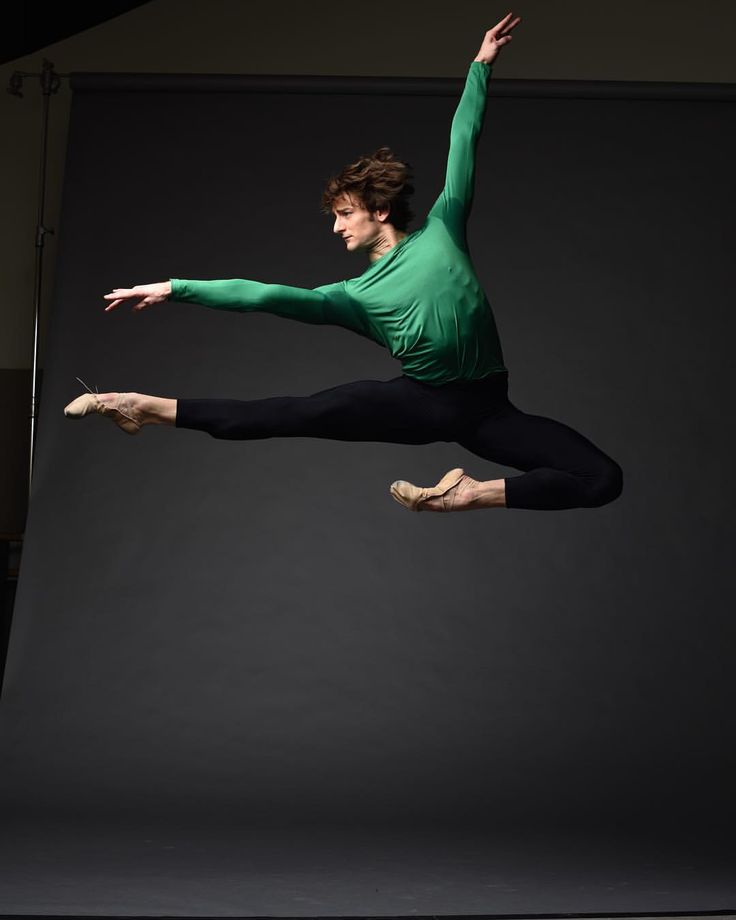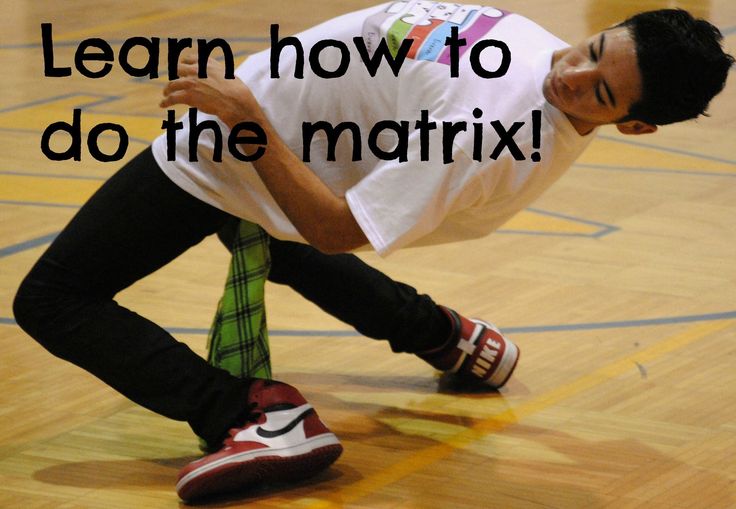How to remix songs for dance
21 Helpful Tips for Making Remixes
So you want to remix a song?
Well, there’s good news and bad news.
The bad news is that unless you know the fundamentals of electronic music production, you’re going to have a hard time. The good news is that once you do, making a remix is pretty damn straightforward.
So what if you don’t know the fundamentals?
Well, you’ve come to the right place. In this guide, I’ll cover 21 tips to help you on your way, covering topics like:
- How making a remix/bootleg is different from an original
- Thinking ahead to create remixes faster (instead of wasting time)
- Creative ways to mangle stems (that most producers neglect)
- Incorporating your signature sound into a remix
- Why using fewer stems can help you make better remixes
Whether you’re remixing a song for a competition, have been contracted an official remix for a release, or cooking up a cheeky bootleg of a popular song, these tips are for you. Read on to learn how to remix a song.
Note: If you’re a new producer, I’ve put together a free 50-page remix guide on everything you need to know about remixing. This thing will get you set up with making remixes in no time.
1. Pick the Right Song to RemixPick a song that you think would benefit from a remix. You’re more likely to follow through with the remix if you like the original song.
This is even more important if you’re making a bootleg and don’t have access to any stems; you need to pick a song that leaves room for work to be done.
As great as Iglooghost’s music is, this one would be tough to remix well.
That’s why acoustic/minimal songs are great to remix. Petit Biscuit’s ‘Sunset Lover’ has such a strong hook but a lot of creative potential, which is why there have been a few remixes of it.
Note: this also applies when being asked to do remixes. If a label asks you to do a remix and you aren’t a fan of it, why not ask if there are other releases that need to be remixed?
2. Listen for the GapsAfter choosing a song to remix, take a good listen to the original and write down any ideas that come to mind.
- Maybe you like the chorus but feel it needs stronger drums or a heavier bassline.
- Perhaps the verse is too long for your liking.
- You could even replace the existing melody with a more unique one.
Whatever comes to mind, write it down and take notes. You’ll use them when you start working on your remix.
You’ll use them when you start working on your remix.
Having a general plan that you can refer back to when stuck in a rut is invaluable. It helps you stay on task and work on the important. And despite what many argue, planning does not inhibit creativity!
Before starting a remix, why not do a bit of brainstorming? If you’ve got ideas from tip #2, then this is the time to write them down.
Even just a few ideas are fine!The result? You’ll sit down to produce your remix with clear intentions and objectives instead of blankly staring at the screen feeling sorry for yourself.
Tip: Consider the audience. If you’re trying to win a remix contest or gain attention from the original artist, think about how that should influence the remix. Are they looking for a club friendly remix, or something more radio friendly? Keeping these in mind will increase your chance of success.
4. Listen to Other RemixesListening to other remixes is a great way to spark some thought and creativity.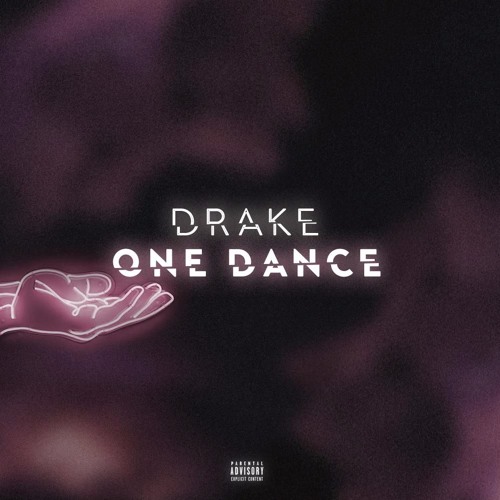 I recommend listening to remixes of the same song you’re trying to remix, or remixes of similar songs.
I recommend listening to remixes of the same song you’re trying to remix, or remixes of similar songs.
Just be careful when doing this as it’s easy to end up copying the remix too closely. There’s nothing wrong with being inspired by a remix and gathering a few ideas, but be wary of similarity.
5. Cut and Choose Your Material (Bootlegs)If you don’t have access to an acapella or any other stems, you’re going to need to identify which parts of the original track you want to, and can, use.
You’ll find that certain sections can’t be used at all, simply because there’s too much going on. I might, for example, take out the intro, outro, and choruses of an original track and only use the breakdown which contains a vocal, then build upon that.
Note: some songs have very little going on, e.g., piano and vocals. These tracks are a joy to bootleg as a lot of the content can be used.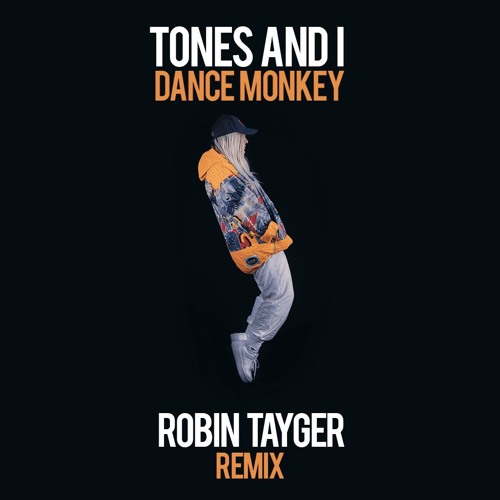
Respect the original track and its content and you’ll have a much easier time remixing it.
This is why working with the material given to you instead of against it is essential.
Flume’s remix of ‘You & Me’ by Disclosure is a great example of this – even though it’s quite different from the original it doesn’t shy away from featuring that main vocal hook and the background vocal effects.
It isn’t wise to turn an original track that’s in 4/4 time signature into 3/4, and a label won’t accept your “remix” if there isn’t a trace of the original track in it. Respect the original and work with the content given to you.
Tip: Listen through the stems and find ones that inspire you. Delete the rest, and build upon those.
7. Arrange your remix ASAPOne of the main reasons people don’t finish remixes is because they don’t get the arrangement down soon enough. Just like building a game plan, the arrangement gives you a sense of direction and allows you to step back to look at how your remix is developing as a whole.
As soon as you have ideas down, sketch out a basic arrangement. You should have it down quicker than you would normally when working on an original, because you already have a few ideas handed to you.
Note: I find it helpful to drag the original track/vocal into my DAW, marking each section of the song. This way, I have the arrangement in place from the start. I may change the arrangement later on in the production process, but I benefit from building on a solid foundation.
Want tips on how to write and arrange better music? Check out Songwriting For Producers.
This was brought to my attention quite recently as I listened to Estiva’s remix of Only For You by Mat Zo. As you can hear, he included the melody from Lucid Dreams, which is one of Mat Zo’s other popular tracks from the same album. You can hear it at 7 seconds in:
Heard any other remixes that do the same thing? Let me know in the comments!
9. Keep it SimilarA remix doesn’t have to be incredibly contrasted to the original. Sometimes you might just want to add a little extra to the original, or expand on ideas.
For example, you’ll often hear remixes where the artist has changed just the bassline and drums, but kept the overall vibe of the song. This is the case in What So Not’s remix of ‘Major Lazer – Get Free’:
This is the case in What So Not’s remix of ‘Major Lazer – Get Free’:
This doesn’t work for every remix, but sometimes it’s exactly what’s needed. Don’t be afraid to keep it similar and add a slight touch.
10. Use Parts of the Original TrackUsing parts of the original track for fills and transitions is a great way to spice up your remix.
For example, you could take 1 bar of the original, stick it at the end of a 16-bar phrase in your remix, automate some phaser and filters to create an awesome transitional effect. There are many other ways to use the original audio, so get creative!
Oh, you want some more ideas?
- Pitch shift syllables or note stabs from the original to use in build-ups.

- Reverse bass and synth sounds from the original to add complexity and flavor.
- Sample drum sounds from the original to add another layer of familiarity.
Want to impress the listener? Get creative with stems! You can make stems your own with enough processing. Reverse and chop up acapellas, apply heavy distortion to bass sounds, the possibilities are endless.
Warping and time-stretching options are fun to play with in your DAW.A few ideas to get you started…
- Use parts of the bass stem(s) to fill in your bassline groove.
- Chop, loop and reverse slices of the original vocal to create your own melodies and effects
- Chop one note from an instrument stem, put it into a sampler, then process it to create something that’s new yet familiar.
- Add phasing, reverb, and filtering to the main melody stem in parts of your song to tease the listener.
- Apply reverb, delay, and distortion to FX stems to significantly change their sound.

If you’re in Ableton Live, check out some of these creative tips which can be applied to processing and mangling.
12. Treat it as an OriginalSometimes we get too involved in the concept of “remixing” that we forget remixing requires originality to actually work. I find it helpful to think of a remix as an original track. This is easier when you’re not familiar with the original track, and less likely to copy its style.
Sometimes, it can even be fun to take an existing original and incorporate a few of the main stems from a remix pack in. This works particularly well when you’re in a creative rut.
13. Create Your Own MelodyCreating your own chord progression or melody in a remix offers yet another level of originality and can often be a tasteful twist. Take the Teqq Remix of Tritonal’s “Now or Never” for example.
Listen to the original:
Listen to the remix:
Tip: A great way to create a remix that’s unique and create is to start the remix without listening to the original. This will force you to reinterpret the original stems, creating something that varies from the original. It’ll take a bit more work to get started, but it can yield fantastic results.
Read: The Ultimate Guide to Writing Better and More Memorable Melodies
14. CollaborateI can’t overemphasize the importance of collaboration. Not only is it ultra fun, but you learn a lot about how other people work and often end up in a more motivated and creative state than you would working by yourself.
Collaborating on a remix is just as fun, if not more fun than collaborating on an original. You’ll both have different opinions on the original track, and you’ll both come up with different ideas.
15. Keep the Original BreakdownProducing a remix doesn’t mean you have to change everything. If it’s bootleg, you may be forced to change the drop, but there’s nothing wrong with leaving the breakdown how it is.
The same applies with an official remix, if the original breakdown works well and flows with your remix, then leaving it in isn’t a sign of laziness or incompetence, it’s just an artistic decision.
Listen to any popular mashup and you’ll see how a breakdown can be extracted from its original surroundings and still work effectively.
16. Use What’s NeededI once downloaded stems for a remix competition (that I never finished) and ended up with a 1GB file containing WAV files for every single track. There was no way I was going to use everything.
Just because you’ve been gifted with an abundance of audio and MIDI files it doesn’t mean you have to use all of them. Take what’s necessary and build your remix on top.
17. Train Your EarsOften you won’t get any MIDI files in a remix pack, for some people this can be a big problem as they aren’t confident in their ability to work out notation from audio and while some DAWs have audio to MIDI conversion, it’s well worth learning to transcribe yourself.
A tuner device can be helpful while you learn.The best way to do this is to practice; remake a melody every day. You could also check out the music theory ear training exercises here.
This also helps with Tip #13. If your ears aren’t primed then you’ll have a much harder time creating your own melody underneath an acapella or something else. Learning music theory is important as well.
Tip: It helps to know the key of the original track. Try to find the key online, or use a software such as Mixed in Key to determine the key of the original.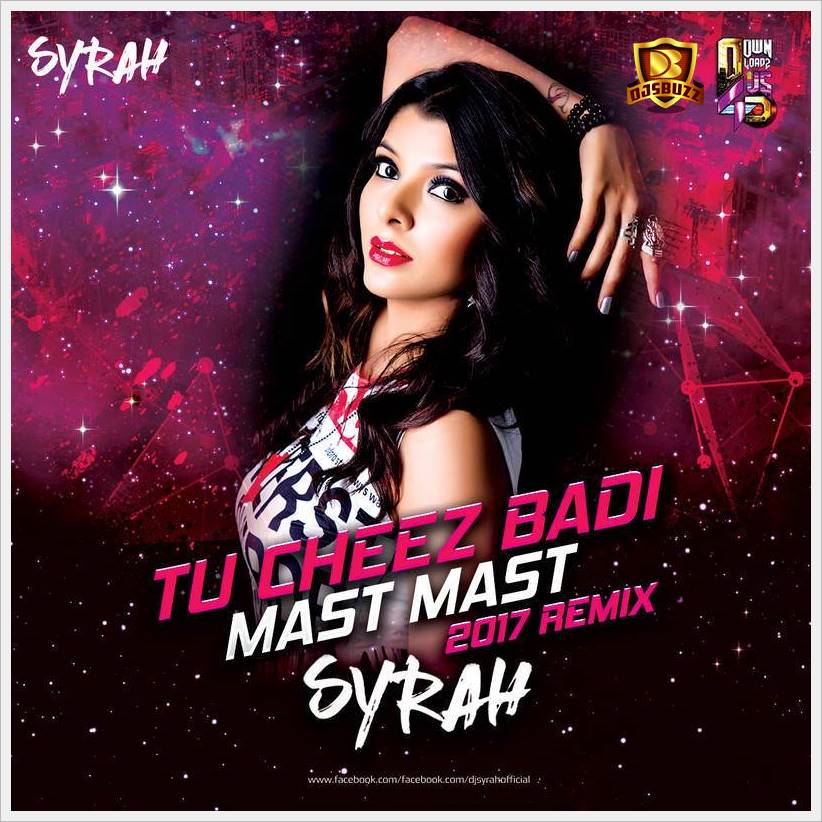
When creating a remix, it’s essential that it adds to original.
A great way to do this is to add your musical signature to the track. This helps add character to the remix, making it stand out amongst all others.
Further, having your own musical signature is a great way to give the listener a sense of cohesion among all your tracks, making them more likely to remember you and your music.
Not sure what I mean? Learn about how Pharrell Williams always has the same intro on all his songs.
19. Add a Second Hook to Your RemixDoes the main idea in the original track not do it for you? Too weak? Too boring?
Why not add a second hook?
Jaytech’s remix of Blood Groove and Kiki’s progressive masterpiece known as Mirage features a memorable vocal chop in addition to the serene chord progression from the original.
The original:
Jaytech’s remix with the vocal hook:
20. Make an Alternative MixEvery now and then you’ll come across a remix project where you’ve got too many ideas. While it can be fun to try and incorporate 20 different ideas into one track, it typically doesn’t turn out great.
My suggestion? Make an alternative mix.
If you’ve been contracted a remix then send the label both and ask for their opinion (worst-case scenario is they don’t want it and you keep it as a private remix) You can also save the extra ideas in a folder and use them in any original productions.
Additionally, remixes are a great opportunity to flex your ‘producer muscles’, so if you have too many ideas, you can create a different verse or chorus in each section, as long as the overall progression of the remix feels natural.
Note: this can also be applied to original tracks if you have too many ideas.
21. Ask for a DeadlineWhenever I get contracted to do a remix this is the first thing I ask for. Deadlines help you stay motivated and finish tracks.
Remix competitions have deadlines by default, and picking one that ends fairly soon is a great way to get back into gear (I often do this if I’m stuck in a rut with production to test myself and see how fast I can work). If you choose a remix competition that ends in 60 days then you’re less likely to feel driven and pressured to finish the track.
Wrapping it UpThis isn’t an all-encompassing guide to remixing (more on this soon), it’s simply a collection of tips that I and others use.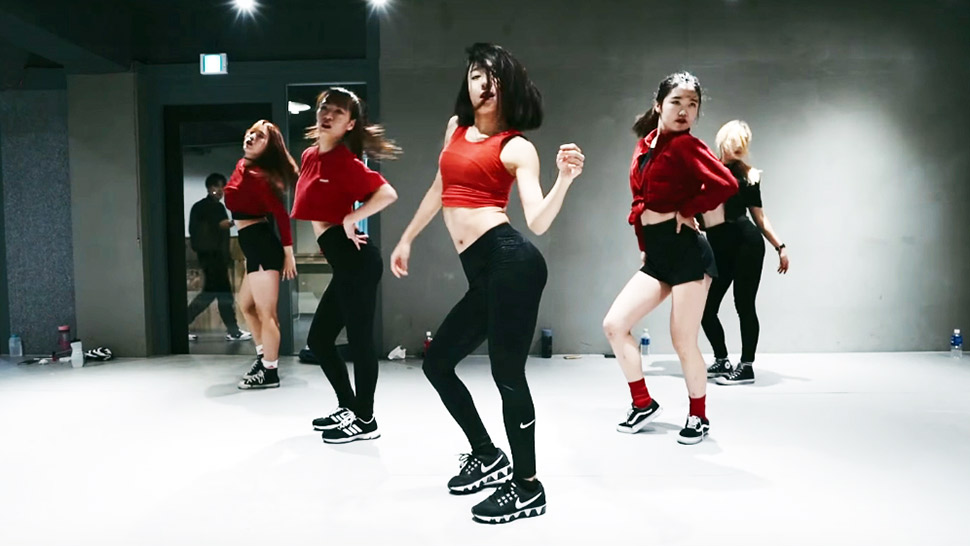 Remixes should be enjoyable, they shouldn’t take months, and you should aim to be creative. Next time you do a remix, why not use a few of these tips?
Remixes should be enjoyable, they shouldn’t take months, and you should aim to be creative. Next time you do a remix, why not use a few of these tips?
Learning how to make electronic music is hard.
There are tons of mistakes to be made, hundreds of YouTube tutorials telling you the right and wrong way to do things…
It’s confusing.
If you want to master the fundamentals of electronic music production and remixing, then I’ve put together a FREE PDF guide. You’ll learn everything, from the basics of remixing, to making your very own original.
How to Remix - Mixed In Key
Remixing is the process of taking different parts, or ‘stems’ of a song and mixing them again in your own way. Since the days of Tom Moulton manually cutting up Disco tapes in the 70s, remixing has become a mainstream staple of Dance Music culture.
It’s not uncommon for remixes to be even more popular than the original track – take 4Hero’s legendary remix of Nuyorican Soul’s Black Gold Of The Sun, for
example, or The XX’s
magnificent take on Florence and the Machine’s cover of You Got The Love.
In fact, if you’re seeking inspiration, you could do worse than digest NME’s list of 50 Greatest Ever Remixes.
In the mix
photo by Gavin Whitner
Remixes vary from faithful reproductions of the original, with subtle tweaks, structure changes or volume alterations to enhance certain aspects, to totally deconstructed affairs, almost unrecognizable from the original.
They are an excellent opportunity to try out new techniques and new plugins, and a great way to learn from professionals.
Simply being able to see how an artist has arranged their track can be a real eye-opener.
Remixes offer a route to increased exposure, and can make for devastating dancefloor weapons. Giving people a little of what they know, in the form of a popular track, and taking it somewhere different can be thrilling.
[the_ad id=”8176″]
Here’s our guide to creating a killer remix:
But before you start…
… there are some crucial questions you should be asking yourself:
Have you picked the RIGHT song? Does it genuinely excite you? Simply plumping for the hottest ‘track du jour’ can be
a recipe for frustration and unfinished work.
What makes it stand out? Are there any parts you particularly dig? Are there any bits you find yourself skipping or losing interest in?
What do you want from your mix? Are you trying to ape a particular genre or artist?
Be honest with yourself, formulate a game-plan and listen to some examples of music you aspire to make.
PRO TIP
The best artists listen to as much music as possible.
It may be tempting to think great artists make great music simply because they have ‘the gift’… while of course they are also phenomenally talented, I guarantee they listen to more music than the average producer too.
I also guarantee they listen to a wider range of music. Even if you only want to make an ultra-niche brand of neuro-tech-minimal-house, your music will be better if you listen to more music
Use Mixed in Key to establish the key of the original track
Mixed In Key is the
industry-standard when it comes to key detection. This is vital in approaching a remix. If you know what key it’s
in, you can make informed choices about adding additional notes and/or samples
This is vital in approaching a remix. If you know what key it’s
in, you can make informed choices about adding additional notes and/or samples
The sum is greater than the Parts
You’ve established its root key, you know where you want to take your remix, you’ve fired up your DAW of choice… now what?
Naturally, the first thing you’ll need is the stems, or parts, of the original song.
There are plenty of websites offering users the chance to remix tracks by up and coming or established artists – Metapop is one such site.
Artists themselves often run remix competitions, and many sites such as Beatport offer Stems for sale, to be used either in DJ sets or the studio.
Of course, you may have been commissioned by an artist directly, in which case they will send you the relevant stems.
The format can vary from 50+ channels of individual instruments, percussion and SFX, to an ultra-basic Drums, Bass,
Melody, Vocals package. Regardless of the complexity of the ensemble, you’ll need to know what BPM the track is and what Key it’s in. You’ll
also want to use WAV, AIFF or other lossless file formats – MP3s, even at 320kbps, aren’t ideal.
Regardless of the complexity of the ensemble, you’ll need to know what BPM the track is and what Key it’s in. You’ll
also want to use WAV, AIFF or other lossless file formats – MP3s, even at 320kbps, aren’t ideal.
Remixes can be as faithful or destructive with the original as the remixer chooses, so don’t be afraid to change the tempo or the track – just make sure you warp the stems individually first.
PRO TIP
Make sure your stems are at the same Sample Rate as your DAW project. Most DAWs will automatically convert them, but if things sound too fast or too slow, check the Sample Rates in your DAW Preferences panel.
A remix can be as straightforward as simply taking the original stems and re-balancing them to suit your tastes.
Since mixing styles have changed over the years, often dictated by the speaker technology of the day, this is
particularly useful when remixing older songs.
Today, drums and bass are generally emphasised more than they were in the 60s and 70s. This makes sense when you consider that today’s nightclub speakers can reproduce far greater bass frequencies.
Artists such as The Reflex are experts at remixing classic songs and making them perfect for modern reproduction, only rarely adding new parts to the song.
Check out his take on Stevie Wonder’s classic ‘I Wish’ – it takes an exceptional ear and a deep understanding of your tools to nail such a simple-seeming technique so perfectly – don’t be fooled into thinking it’s an easy option!
Captain Plugins helps you write advanced chord progressions and melodies faster
Once you know which key you’re working in, you can start adding additional instrumentation to your remix. Captain
Plugins lets you set the key, and then offers you intelligently selected chords, rhythms, timings and notes to allow
ultra-fast, ultra-creative musical experimentation.
Try Captain Plugins today!
Melody Maker
Most remixers also add their own sounds to the track – an obvious way to make it unique.
Since you know what Key your song is in, you can start fooling around with melodies within that key.
PRO TIP
Many producers find writing melodies on a simple piano patch is a good way of ensuring the melody fundamentally works in the track. Some synth sounds can mask bum notes and key clashes so you might find starting with piano, and then auditioning new synth sounds is a foolproof way to ensure tonal perfection.
Whatever sounds and melodies you add, make sure they work with the original, not against it. Less is often more!
Another tip is to use the add/subtract formula – only add new melodies if you take away a sound in the same
frequency range first. Of course, rules are made to be broken, but try to avoid a cluttered mix.
Structurally sound
Great remixes need great structures – particularly true if you’re making Dance Music.
A good starting point is to identify the original structure. Color-code each section in your DAW. Then try cutting and pasting sections into a structure that suits your vision.
Generally speaking, Dance Music runs like this:
Dance music song structure
PRO TIP
Use Colour-coding within your DAW’s Project Window to mark out your structure. A different colour for each section can save a lot of hassle down the line!
Get creative
Take this opportunity to consider which parts of the original would make great candidates for the various segments
of your mix. Perhaps there’s an awesome little synth line you could loop and filter? Or maybe there’s a vocal line
that you’d like to hear more of… try cutting and pasting it in new spaces in the track. Be as creative as you
like, and don’t be afraid to chop things really short – looping is a great way to build tension.
Be as creative as you
like, and don’t be afraid to chop things really short – looping is a great way to build tension.
PRO TIP
A remix doesn’t need to follow the same structure as the original.
Drumming up business
The vast majority of remixes completely revamp the drums, even if faithful to most other parts of the original.
You want to make the mix your own, without cluttering an already fully-composed song. Plus, you like the original, so don’t throw the baby out with the bathwater.
The drums, however, are fair game… many producers don’t even load them up in their project to start with!
Choose a drum palette that you love – whether from sample packs, records you dig, or live recordings. Make sure that you’ve got a range of options for Kick, Snare, Clap, Hi-Hats, Cymbals and Percussion.
Create a basic beat that suits the style of your remix, and loop it throughout your carefully crafted structure.
You’ll want to bring in new patterns, add and remove sounds and make plenty of space for your builds and breakdowns as you go.
PRO TIP
It may seem obvious, but drums actually need to be in tune with the rest of the song. Traditionally this is done by ear. Solo each drum with the main melody or bassline and pitch the drum until it sounds ‘just right’. Great training for your ears!
You can automate the tuning process if you have an EQ that provides notation information, such as Waves H-EQ. When playing the drum in question through the EQ, watch for where the main spike occurs, and simply follow that down to the keyboard below, where you’ll see it matched to a root note. This technique is particularly useful when layering drums together.
Plug-in Playground
A great way to invigorate your stems is to play around with FX, filters, Delays, Reverbs and so on.
Using them in combination or on their own, there’s an almost limitless array of ways to manipulate sound at your fingertips. DAWs like Ableton and Logic have exceptional plugins as standard, so anyone can create beautiful soundscapes – all you need is imagination, creativity and a little patience!
Write your own tracks using Captain Plugins
It’s super easy to create your own ideas from scratch. Visit the official Captain Plugins homepage and see how it will help you explore music and write your own original productions.
Reels appeared in Reels - this is the analogue of duets in TikTok |
Music - 15:30, October 22, 2022
"Look what I did!" The evolution of Arctic Monkeys from dance-punk to piano rock
News, News — October 22, 15:30
First gameplay trailer for One Piece Odyssey released
News — October 20, 08:00
League of Extraordinary Content Creators
News, News — October 22, 2:03 pm
Taylor Swift's album Midnights sets two records 24 hours after release
News — October 12, 16:26
Card with "bears" and free service — Tinkoff has a collaboration with the Tretyakov Gallery young performers in the new show "Fly into Trends"
Popular TopicPopular
Interview - October 5, 14:47
Kid from Siberia. Interview with singer Kirill Skripnik about Black Star, Claudia Koka and Jedi
Interview with singer Kirill Skripnik about Black Star, Claudia Koka and Jedi
Interview - October 4, 13:19
Inclusiveness, cinephilism and metaphysical vertigo. Interview with director Rebecca Zlotowski
Reviews - October 3, 13:30
"Where they will always welcome me." Review of the film "Passengers of the Night"
Reviews - October 2, 17:37
"Hey, bandits" and other quotes by Valya Karnaval
Reviews - October 1, 18:13
Home, sweet home. Raytraun, Arina Danilova and other bloggers about hometowns, abandoned places and selfie spots
Reviews - September 29, 12:15 pm
"She who digs." Björk's long journey to earthiness and new album Fossora
Interview - September 27, 6:49 pm
"For me, hate is always a waste of time. " Interview with director Arnaud Desplechin
" Interview with director Arnaud Desplechin
Column - September 27, 16:22
Please do not listen to this track. Boris Barabanov talks about the brightest debutants of this fall in popular music
Interview — August 31, 13:25
About podcasts, performances and tiles. Interview with composer Kira Weinstein
Interview - August 30, 20:26
"I love impressions, not love moods." Interview with actor Kuzma Kotrelev
Interview - August 29, 18:33
Rap star from dance. Choreographer Vladimir Varnava - about contemporary, surfing and "Ballet"
Interview - August 23, 13:26
"I'm kind of stealthily, stealthily." Interview with Evgeny Schwartz about decadence, Vertinsky and The King and the Jester
Interview - Aug 22, 12:24 pm
"Antagonist's vibe follows me around.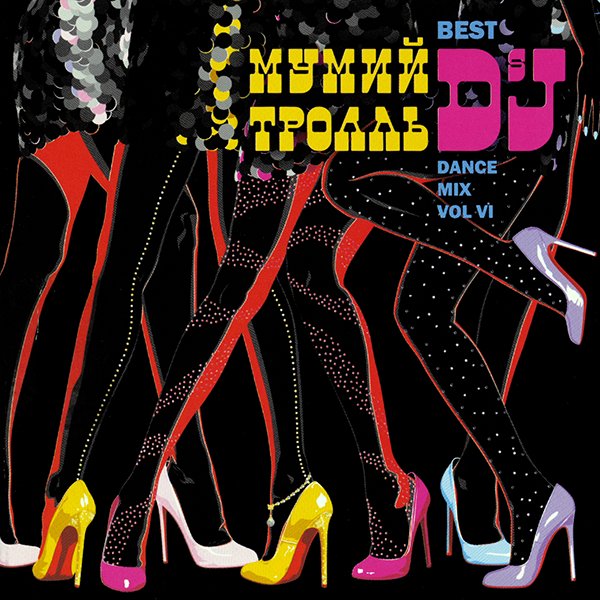 " Interview with Lera Lyubarskaya
" Interview with Lera Lyubarskaya
Cinema — October 22, 12:00
New French cinema: Athena, A Little Lesson in Love, My Brothers and Me, Undercover, Hot Vacation
News, News — October 21, 20:12
The neural network showed the professions of the future. Among them is a smart home designer and digital rehabilitation consultant
News, News — October 21, 19:30
XO Team has released a video for the track On Top. It has been compared to clips of k-pop stars
Cinema - October 21, 18:31
Well, we'll see. "No" and "Ticket to Paradise"
News, News - October 21, 18:02
Nika Nevaaadaa and Kolya Spesivtsev recorded a joint video. In it, bloggers told the story of their relationship
News, News — October 21, 17:15
Taylor Swift released the album Midnights and a video for the track Anti-Hero
News, News — October 21, 16:00
Lalique collaborates with artist James Turrell. This is a collection of perfumes inspired by the Wild West iPad Pro on M2 Gets New OS
This is a collection of perfumes inspired by the Wild West iPad Pro on M2 Gets New OS
News, News — October 21, 13:33
adidas has a new collaboration with The Simpsons — sneakers dedicated to Marge
Interview — October 18, 18:06
festival curator Context. Diana Vishneva. Interview with choreographer Pavel Glukhov
Interview - October 16, 13:54
About the film "Whirlwind", Dario Argento and split-screen. Interview with Gaspard Noe
Interview - October 10, 16:38
Rain Boy, album in pseudo-Portuguese and DJ Cucumber. Interview with the soloist of the Hadn Dadn group Varvara Kraminova
Interview — October 6, 15:48
Runet, cyberethics, podcasts. Interview with producer Alexander Dolgov
Interview - October 5, 14:47
Kid from Siberia. Interview with singer Kirill Skripnik about Black Star, Claudia Koka and Jedi
Interview with singer Kirill Skripnik about Black Star, Claudia Koka and Jedi
Interview - October 4, 13:19
Inclusiveness, cinephilism and metaphysical vertigo. Interview with director Rebecca Zlotowski
Interview - September 27, 6:49 pm
"For me, hate is always a waste of time." Interview with director Arnaud Desplechin
Interview - September 23, 11:30
"Why go back to a restaurant when five new ones open this week?" Interview with the head of Mayak PR-bureau Kristina Zhegunova
Interview — September 14, 13:34
Ambassador of aesthetic pleasures. Ilya Kusnirovich - about Yerevan, immersion in the cultural context and ugly stories
Interview - September 13, 13:53
XO Team, Dropper, Hollywood. Interview with Herman Chernykh
Interview — September 6, 16:30
Creator of digital hell. Interview with artist Kirill Kontre - about NFT fever, bad CG animation and collaboration with Lady Gaga
Interview with artist Kirill Kontre - about NFT fever, bad CG animation and collaboration with Lady Gaga
Interview - September 4, 13:50
Vital Israeli groove. Interview with hip-hop star Echo
Interview - September 2, 15:30
Cool guys in Corpspaint. Interview with the CREAMY KRAI band about the track “Up to 10”, images and pop punk
Interview — August 31, 13:25
About podcasts, performances and tiles. Interview with composer Kira Weinstein
Interview - August 30, 20:26
"I love impressions, not love moods." Interview with actor Kuzma Kotrelev
Interview - August 29, 18:33
Rap star from dance. Choreographer Vladimir Varnava talks about contemporary, surfing and Ballet
Interview - August 24, 10:28 pm
Keyboardist for Billy Idol and Dream Theater. Interview with Derek Sherinian
Interview with Derek Sherinian
Interview - August 23, 13:26
"I'm kind of sneaky, sneaky." Interview with Evgeny Schwartz about decadence, Vertinsky and The King and the Jester
Interview — August 22, 12:24 pm
“The vibe of the antagonist is following me.” Interview with Lera Lyubarskaya
Interview - August 15, 12:00
"I don't run from my past, like Saul." Interview with Bob Odenkirk about heart attack, series finale and Nobody 20003
Interview - August 12, 18:29
Punk-rap, Gagauz and Slavic Khton. Mowgli - about pipes, live and "Jericho"
Interview - August 11, 21:35
All this jazz. Organizers tell how the Future Drops festival works
Interview — August 11, 19:39
Pioneer of St. Petersburg techno. Interview with DJ Lena Popova
Interview — August 11, 15:36
YouTube's main fairy. Interview with Una Fata
Interview with Una Fata
Interview - August 10, 20:18
Karina Arakelyan's magical love. Interview with the queen of mysticism and drama
Interview - July 30, 19:08
No more Barbie girl. Interview with Diana Aster
Column - July 29, 21:11
Jazz came from unexpected places. Boris Barabanov about the Dagestan group "nooo, what are you"
Interview - July 29, 09:30
Russian artists at Burning Man. Interview with Stanislav and Irina Shminke
Interview - July 28, 11:05 am
My funny friend. Pleasant Ildar - about gangsta rap, a career on TV and reactions
Interview - July 27, 4:24 pm
"I don't need OnlyFans to raise cash." Interview with Katya Golysheva about scandals, guys and Karina Arakelyan The Lord of the Rings: The Fellowship of the Ring will release NFT version
News, News — October 21, 09:40
Fire at Windsor Castle and Diana's interview: The Crown season 5 trailer is out
News, News — October 20 , 19:30
Lana Del Rey's laptop with new tracks was stolen. The star asked not to listen to them until the official release of
The star asked not to listen to them until the official release of
News, News — October 20, 18:01
Prada Mode cultural club will open in Dubai. It will include an installation by Damien Hirst
News — October 20, 17:48
Desperate Goldilocks. Interview with Alisa Can't Wait actress Liza Ishchenko James Webb took the most detailed picture of the "Pillars of Creation"
All stars and influenters
Blogger, singer
Anya
Pokrov
Blogger, singer
Valyv
Carnival
Blogger
Dina
Act, Model
Irina
Shelina TV presenter
Ida
Galich
News, News — October 20, 14:44
New place in Moscow: Cafe 1755 on Vernadsky Avenue
News, News — October 20, 13:30
Remake, spin-offs and a new film: the results of the Silent Hill Transmission presentation
News — October 20, 12:57
Nart epic, pom-pom shops and pumpkin khingalsh: how the SRSLY editors went to the Caucasus
News, News — 20 October, 12:25
Piece of cake from the wedding of Princess Diana and Prince Charles sold at auction0003
News, News — October 19, 18:25
New place in Moscow: NRKMFN cafe in Narkomfin House
News, News — October 19, 17:17
Warner Bros. Games Announces Mortal Kombat: Onslaught Mobile Game
Games Announces Mortal Kombat: Onslaught Mobile Game
News, News - October 19, 15:33
EA Announces Next-Generation The Sims And Reveals First Footage From The Game
News, News - October 19, 2:40
Celena Brand released a collection of clothes for the home inspired by astrology
The 4 Best Ways to Put Songs Together
There are many situations where you might need to put songs together: to dub a TikTok video, to put together a cut-up DJ set, just for fun and to create your own remix. You can connect music on a computer or on a smartphone, and this is not as difficult as it seems. We carefully studied many desktop editors, mobile applications and online services with the function of combining audio tracks and selected the most convenient ones. In the article we talk briefly about each, and also give step-by-step instructions on how to glue music together and save the result in MP3 or other audio format.
How to merge songs in Movavi Video Editor
Have you downloaded your favorite DJ's mix, but it was cut into separate tracks? Or do you just want to merge several audio files so that you don't have to switch music, for example, when staging a play or dance? A great solution is Movavi's simple audio trimming and merging software. You can glue both ready-made melodies and recordings of your voice from a microphone.
To learn how to combine songs, two or more, into one, download Movavi Video Editor and follow our step by step guide!
Step 1. Install Song Merge Application
Download Music Merge Software, launch the distribution and install Movavi Video Editor following the instructions. After installation, the program will start automatically.
Free Download
Free Download
Download
Download
Step 2. Add files and merge tracks
Click the Add files button and select the audio files you want to merge. Your uploaded audio files will be automatically placed next to each other by Timeline on a separate audio track, indicated by a note icon. In fact, after adding the tracks will already be glued together. You will only need to change the order of playing fragments if necessary. To do this, simply drag the audio to the desired location on the Timeline .
Your uploaded audio files will be automatically placed next to each other by Timeline on a separate audio track, indicated by a note icon. In fact, after adding the tracks will already be glued together. You will only need to change the order of playing fragments if necessary. To do this, simply drag the audio to the desired location on the Timeline .
Step 3. Trim the audio if necessary
If you need to not only merge audio files, but also delete certain passages, set the red marker to Timeline where you want to split the record and press the Split button. Delete the unwanted segment: select it, then press the Delete key.
Step 4: Save the audio
Click the Save button, then click the Save as audio file tab. Specify the desired audio format (MP3, WAV, WMA, etc.) and save folder and press Start . After that, it will be exported to an audio file.
How to join music online
Online tools are a versatile option when you need to quickly join songs without wasting time downloading, installing, learning programs or mobile applications. A common drawback of such services is a smaller set of features compared to mobile and computer audio editors.
A common drawback of such services is a smaller set of features compared to mobile and computer audio editors.
123apps
A simple service where you can combine two songs into one in a couple of clicks or glue an audio track from more fragments. Supports more than 300 formats, and the result is saved as MP3, M4A, WAV or FLAC supported by most players and portable players.
How to join music in 123apps
- Open the main page of the audio editor.
- Click Add Tracks or drag files to be glued into the editing area on the page.
- Adjust the timing of each track by dragging the edge of the track, or by adjusting the start and fade times at the bottom of the editor window.
- Click the curve icon on a track if you want to turn on the crossfade function - the sound flows smoothly between tracks without pauses.
- Select the save format in the lower right corner of the editor: MP3, M4A, WAV or FLAC.

- Click Connect to start audio mixing.
- Download the result to your computer or cloud storage using the link that will be displayed on the screen after the processing is completed.
Pros
- Supports an unlimited number of tracks to connect
- Choice of result saving format is available
- Open the Clideo website in any browser.
- Click Select files to download audio tracks to merge from your device, or the arrow on the same button to select files from your Google Drive and Dropbox cloud storage accounts or add songs via a direct link from the Internet.
- Drag and drop tracks to arrange their sound order in the finished mix.
- If necessary, turn on the smooth transition by checking the corresponding box on the right side of the editor window.
- At the bottom of the online editor window, select the format in which you will export the finished mix: 10+ options are available.

- Click on Export and wait for the process to complete to download the result to your computer or to the cloud.
- Merges an unlimited number of songs
- Supports smooth transition setting
- 0407
- Lack of fine tuning and export quality control
- Open the main page of the editor.
- Drag and drop files into the workspace or add files to process by pressing the green button Select file . You can also download songs via a direct link from the Internet, to do this, go to the URL tab.
- Select the result format at the bottom of the page.
- Activate Crossfade by checking the appropriate box (translated as "The cross disappears in the Russian version?".

- Click on Audio Merge and download the result when processing is completed and the service will provide a link to the exported file.
- Install the application on your smartphone or tablet.
- On the main screen of MP3 Audio Merger and Joiner, click the plus icon to add songs to merge.
- Click the green button Merge at the bottom of the window.
- Select the result format File type .
- Select the type of gluing Process type - mixing (mix) or sequential combination - join.
- Click Continue , set the save path and file name.
- Click Done .

- When the merging process is completed, the application will offer to listen to the result - Play 9035
How to merge songs into MP3 Cutter and Audio Merger
- Install the application on your device.
- Select Audio Merger from the main screen.
- Click on plus (+) to upload audio files to be combined into one.
- Click Merge to go to export settings.
- Set the export format and other options, then click Continue .
- Listen to the result -
How to join songs in iMovie
- Launch the editor.
- Create a new project.
- Add audio tracks prepared for gluing to it.
- Set the export format.
- Press Done to start the merging process
- The merging result can be reproduced here or exported to another application.
Pros
- All-in-one program, useful when you need to work not only with audio, but also with video
- Launch the installed Hokusai Audio Editor.

- Add audio tracks for gluing. by clicking the corresponding icon in the application.
- Edit the length of each track in the mix.
- Open the menu with a tap in the upper right corner and select any of the available types of transitions between tracks.
- Export your mix as MP3 or any other suitable format.
Pros
- Customizable transitions between glued tracks
- Support for a large number of formats for importing and exporting a file
Cons
On Windows computers, you can merge several songs or any other audio files into one without installing additional utilities - via the command line. Setting transitions, trimming and other options on the command line are not available, but if you just need to assemble a disparate playlist into a long mix, then you should use the method.
How to join songs in the Windows command line
- Open the command line - Start > Command Prompt .

- Enter the command to go to the folder containing all the files to be glued:
- cd [folder path], for example, cd \Video\MyPlaylist
- Enter the command: copy/b audio file1.mp3 + audio file2.mp3 audio file3.mp3, where file1.mp3, file2.mp3, file3.mp3 are the names of the files to merge.
- Press key Enter on the keyboard.
The mix of audio files will be saved in the same folder as the original fragments to merge. The process takes literally a matter of seconds, even if there are a lot of files. The size of the resulting file depends on the size of the source files - the higher the quality of the audio recordings, the more space on the hard drive will be needed to save the finished long mix.
The command line audio merging method has two significant advantages at once: it is fast and does not require additional software to be installed. There are also disadvantages: nothing can be configured, it will not be possible to combine songs in different formats.
 But if you need to compile a playlist, for example, an album of your favorite artist downloaded from the Internet, into one file, the command line will help you do it quickly and without unnecessary difficulties.
But if you need to compile a playlist, for example, an album of your favorite artist downloaded from the Internet, into one file, the command line will help you do it quickly and without unnecessary difficulties. Which way to combine multiple audio files into one is up to you. For those who often need to mix tracks, it is preferable to have one reliable tool at hand, for example, Movavi Video Editor or its equivalents. For piecing together sounds on the go, mobile offerings for your platform come in handy. It is also useful to keep links to 1-2 online editors in your browser bookmarks, in case you suddenly need to mix files without installing programs and applications.
Valeria Kruchina
Full-time Movavi content manager: writes and edits web texts, translates articles from English. She has been translating IT texts for over 4 years. A graduate of the Faculty of Foreign Languages of Tomsk State University, she also studied as an exchange student at the University of Durham, UK.

- Launch the installed Hokusai Audio Editor.
How to join music in Clideo
Pros
Cons
MP3CutterPro
Service for gluing audio from a cut or connecting different songs into one set. Supports more than 10 source formats and exported merging result.
How to merge music in MP3CutterPro
Pros
MP3 Audio Merger and Joiner
A free audio merging tool for Android smartphones and tablets. The application is not demanding on hardware, therefore it works even on old weak smartphones on OS version 4.4 or higher.
How to merge songs into MP3 Audio Merger and Joiner



